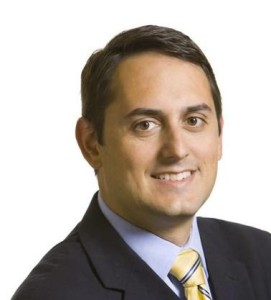 The Right Note is a weekly opinion column. The views and opinions expressed in the column are those of the author and do not necessarily reflect the views of ARLnow.com.
The Right Note is a weekly opinion column. The views and opinions expressed in the column are those of the author and do not necessarily reflect the views of ARLnow.com.
Meeting the transportation needs of both Arlington’s residents and the greater region is no easy task. And Metro’s problems have only made it harder. While there is no doubt our county leaders take the issue seriously, they do often make decisions that can leave Arlingtonians scratching their heads.
1. Planning to spend $575,000 for each bus stop on Columbia Pike.
It is still hard to fathom that Arlington officials view reducing the cost of a bus stop from $1 million to $575,000 as a win. The $13.3 million the county plans to spend to construct 23 of them over the next four years could be used to shore up Metro instead.
2. Supporting changes to improve two lane I-66?
The Arlington County Board is set to vote on whether to support the latest plans on I-66. Our Board had historically opposed any real changes to the corridor, but in recent years has moved to support some widening of the highway. Unfortunately, acting as an impediment to improvements both on I-66 and I-395 in the past has put us years behind in addressing transportation needs.
The congestion on I-66 in particular has forced traffic onto secondary surface streets through our neighborhoods. It is also worse for the environment. Increased time sitting in traffic produces more tailpipe emissions than when traffic moves at normal speeds.
As long as the federal government is centered in Washington, cars are going to drive through Arlington. The only question is, how long will it take them and what route will they take?
3. Narrowing streets.
Chairman Fisette is passionate about bikes, as are many other Arlingtonians. But the resulting increase in traffic congestion on roads reduced from four lanes to two to accommodate dedicated bike lanes seems to indicate that there may not be enough people interested in using bikes for commuting to justify the changes.
In the meantime, a good deal of street parking has been eliminated. And on some streets that were narrowed but where parking is maintained, it is virtually impossible to crack the door of your car without it entering into a traffic lane.
The money used for street narrowing should have been prioritized for repaving and improving our existing transportation infrastructure.
4. Using staff time and resources to study a taxpayer-funded gondola.
With an estimated $80-90 million price tag, the Arlington share of the project would presumably be at least $40 million if those cost projections are realistic. But when Portland constructed its gondola, the costs escalated by nearly 400%, and operating costs nearly doubled.
Arlington taxpayers wasted a good deal of time and money on the Columbia Pike Streetcar before it was ultimately shelved. The Board should remember the lessons learned from that exercise before committing more time and money to the gondola.


